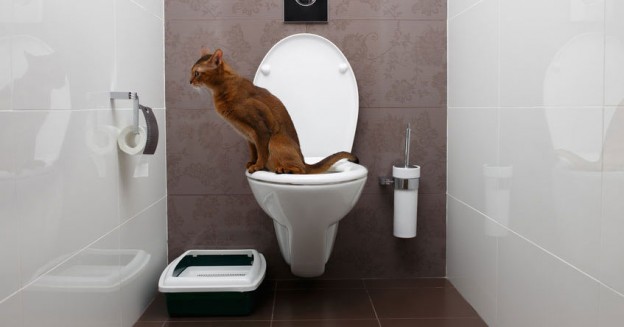Dangers of Flushing Cat Poop Down Your Toilet - Prevent Possible Issues
Call TodayDo you find yourself trying to find advise Can You Flush Cat Poo or Litter Down the Toilet??

Introduction
As pet cat proprietors, it's necessary to bear in mind just how we dispose of our feline close friends' waste. While it might seem practical to purge pet cat poop down the toilet, this practice can have harmful repercussions for both the setting and human health.
Environmental Impact
Flushing cat poop presents unsafe virus and parasites right into the supply of water, presenting a considerable threat to marine ecosystems. These impurities can adversely affect aquatic life and compromise water high quality.
Health Risks
In addition to environmental problems, flushing pet cat waste can additionally position health and wellness threats to human beings. Pet cat feces may consist of Toxoplasma gondii, a parasite that can cause toxoplasmosis-- a potentially severe health problem, particularly for expecting females and people with weakened body immune systems.
Alternatives to Flushing
The good news is, there are more secure and more responsible methods to throw away feline poop. Take into consideration the following options:
1. Scoop and Dispose in Trash
The most usual method of disposing of pet cat poop is to scoop it right into an eco-friendly bag and throw it in the garbage. Make sure to make use of a devoted trash scoop and get rid of the waste quickly.
2. Usage Biodegradable Litter
Select eco-friendly feline litter made from materials such as corn or wheat. These litters are environmentally friendly and can be safely taken care of in the trash.
3. Hide in the Yard
If you have a yard, take into consideration burying pet cat waste in an assigned area away from vegetable yards and water resources. Make certain to dig deep adequate to avoid contamination of groundwater.
4. Install a Pet Waste Disposal System
Invest in a pet dog garbage disposal system especially made for cat waste. These systems use enzymes to break down the waste, lowering odor and environmental effect.
Final thought
Responsible pet ownership prolongs beyond giving food and sanctuary-- it also entails correct waste management. By avoiding purging feline poop down the commode and going with different disposal methods, we can minimize our environmental footprint and safeguard human wellness.
Why Can’t I Flush Cat Poop?
It Spreads a Parasite
Cats are frequently infected with a parasite called toxoplasma gondii. The parasite causes an infection called toxoplasmosis. It is usually harmless to cats. The parasite only uses cat poop as a host for its eggs. Otherwise, the cat’s immune system usually keeps the infection at low enough levels to maintain its own health. But it does not stop the develop of eggs. These eggs are tiny and surprisingly tough. They may survive for a year before they begin to grow. But that’s the problem.
Our wastewater system is not designed to deal with toxoplasmosis eggs. Instead, most eggs will flush from your toilet into sewers and wastewater management plants. After the sewage is treated for many other harmful things in it, it is typically released into local rivers, lakes, or oceans. Here, the toxoplasmosis eggs can find new hosts, including starfish, crabs, otters, and many other wildlife. For many, this is a significant risk to their health. Toxoplasmosis can also end up infecting water sources that are important for agriculture, which means our deer, pigs, and sheep can get infected too.
Is There Risk to Humans?
There can be a risk to human life from flushing cat poop down the toilet. If you do so, the parasites from your cat’s poop can end up in shellfish, game animals, or livestock. If this meat is then served raw or undercooked, the people who eat it can get sick.
In fact, according to the CDC, 40 million people in the United States are infected with toxoplasma gondii. They get it from exposure to infected seafood, or from some kind of cat poop contamination, like drinking from a stream that is contaminated or touching anything that has come into contact with cat poop. That includes just cleaning a cat litter box.
Most people who get infected with these parasites will not develop any symptoms. However, for pregnant women or for those with compromised immune systems, the parasite can cause severe health problems.
How to Handle Cat Poop
The best way to handle cat poop is actually to clean the box more often. The eggs that the parasite sheds will not become active until one to five days after the cat poops. That means that if you clean daily, you’re much less likely to come into direct contact with infectious eggs.
That said, always dispose of cat poop in the garbage and not down the toilet. Wash your hands before and after you clean the litter box, and bring the bag of poop right outside to your garbage bins.
https://trenchlesssolutionsusa.com/why-cant-i-flush-cat-poop/

I stumbled upon that write up about Don’t flush cat feces down the toilet when doing a lookup on the web. Sharing is caring. Helping others is fun. Thank you for going through it.
Request Service